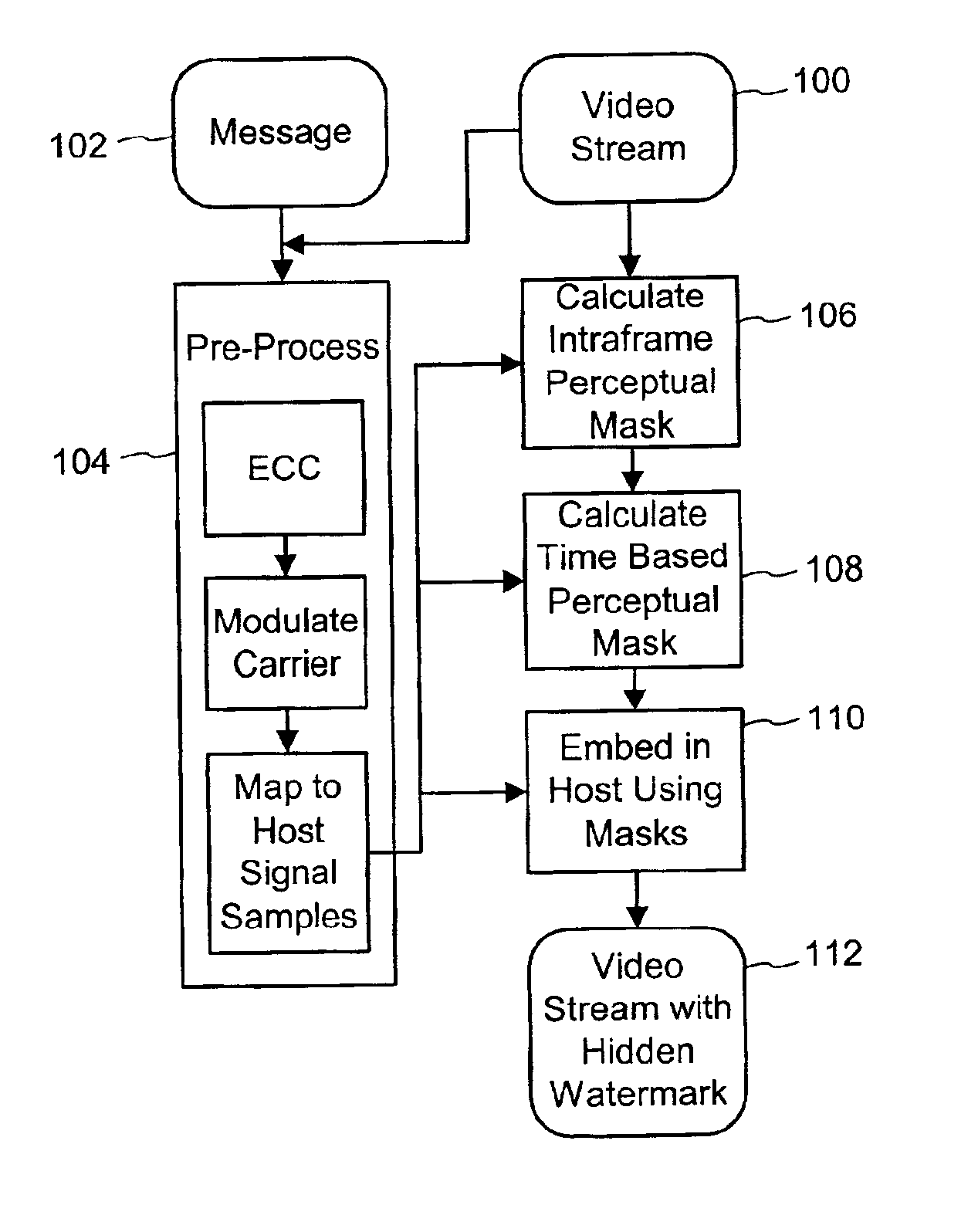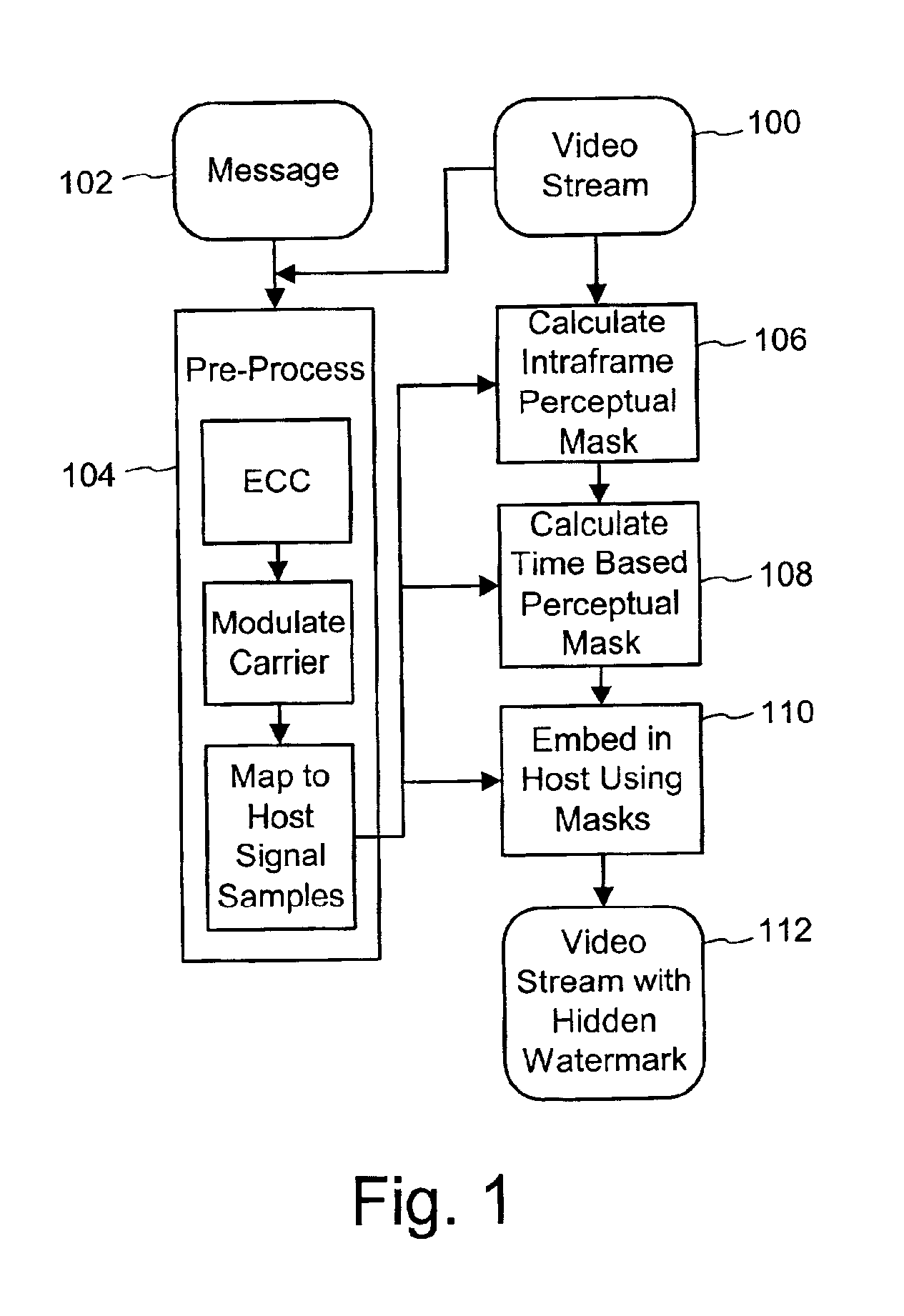Time and object based masking for video watermarking
a masking and video technology, applied in the field of steganography, digital watermarking, data hiding, etc., to achieve the effect of alleviating edge effects, reducing value, and removing distortion
- Summary
- Abstract
- Description
- Claims
- Application Information
AI Technical Summary
Benefits of technology
Problems solved by technology
Method used
Image
Examples
Embodiment Construction
Time-Based Masking of Video Watermarks
[0010]An improvement is to change the gain of the watermark depending upon the dynamic attributes of the local area around the watermark. Specifically, if the pixel represents a changing or moving area, the watermark is reduced in value, unless the movement is chaotic or noise-like, in which case the gain can remain large.
[0011]More specifically, given the current value for one pixel, if that current value is similar to the values before and after the current frame (for the same pixel), the watermark gain, labeled time-gain, for that pixel should be near 1. The time-gain should drop as the values of that pixel change in time, as long as the change is steady over time. The more the steady change, the smaller the time gain, where change can be measured as absolute difference or statistical variance. This should be repeated for each pixel or group of pixels in the frame. However, if the change in the pixel or group of pixels is chaotic or noise-lik...
PUM
 Login to View More
Login to View More Abstract
Description
Claims
Application Information
 Login to View More
Login to View More - R&D
- Intellectual Property
- Life Sciences
- Materials
- Tech Scout
- Unparalleled Data Quality
- Higher Quality Content
- 60% Fewer Hallucinations
Browse by: Latest US Patents, China's latest patents, Technical Efficacy Thesaurus, Application Domain, Technology Topic, Popular Technical Reports.
© 2025 PatSnap. All rights reserved.Legal|Privacy policy|Modern Slavery Act Transparency Statement|Sitemap|About US| Contact US: help@patsnap.com


